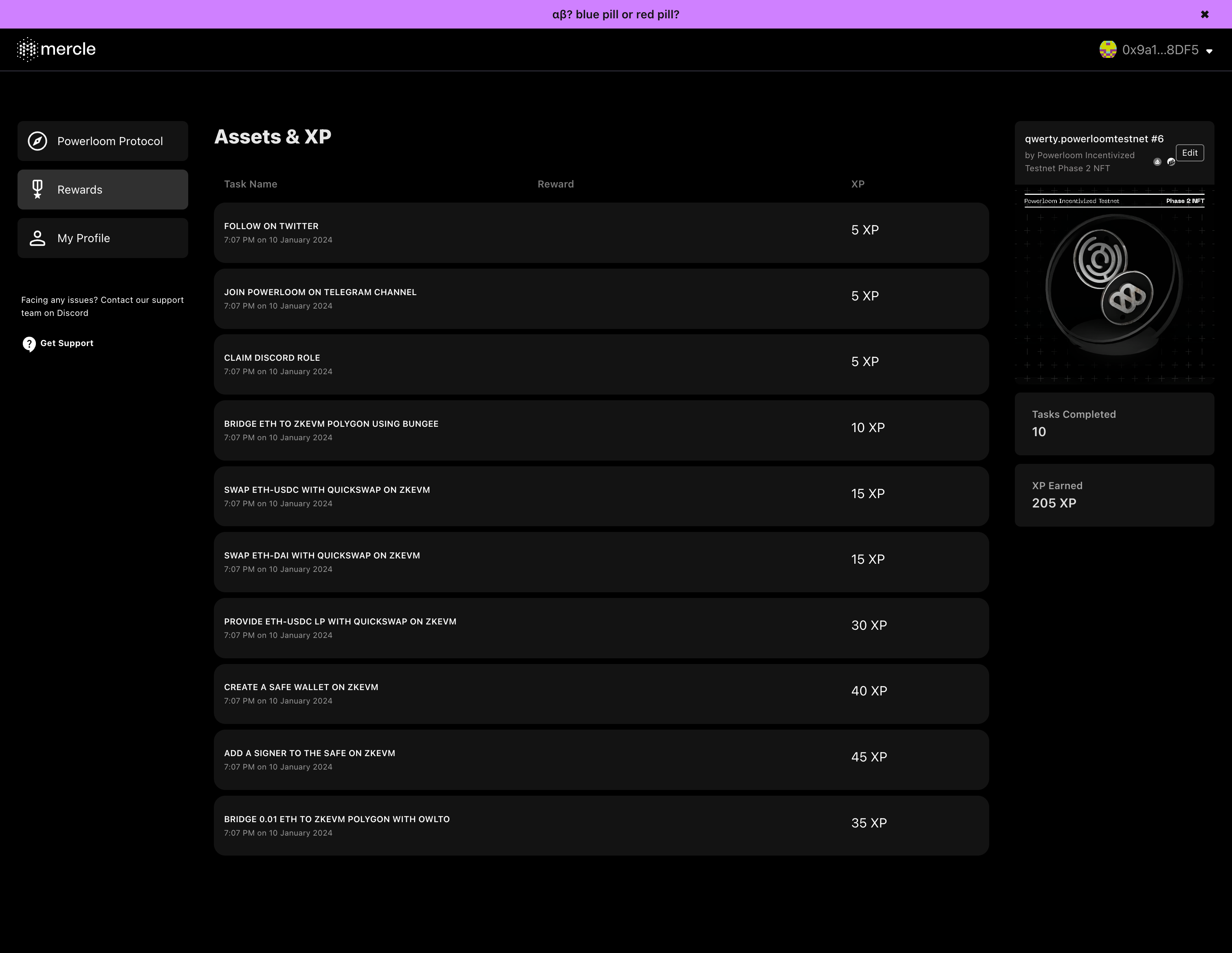Testnet Phase 2
Overview of Phase 2
Phase 2 of the Powerloom testnet emphasizes user engagement in onchain activities to assess the network's resilience. Participants are encouraged to interact with the network by signaling onchain data, which is then captured by Powerloom Snapshotters. Users are rewarded for their involvement in various onchain tasks designed.
Engaging Onchain Activities
Participants in Phase 2 engage in a variety of onchain activities hosted on Mercle, a platform we've partnered with for this phase. This collaboration is a key part of our Phase 2 architecture, where we provide Mercle with a data feed that tracks activities completed by users on our partner protocols. These activities, or quests, are then recorded and rewarded with XP points, creating an incentivized environment for participants.
The range of tasks includes bridging assets from Ethereum to Polygon zkEVM, swapping assets, and contributing to liquidity pools. The following image provides a glimpse of our dashboard, displaying the completed tasks:

Powerloom powers the verification process for all onchain tasks, ensuring accuracy and reliability in tracking user activities.
Collaborative Partnerships
Phase 2 of the Powerloom testnet is significantly enhanced by collaborations with a group of key partners, each contributing unique value to the ecosystem:
These partnerships enrich our phase 2 with diverse functionalities and opportunities. For detailed information about each of these ecosystem partners, please visit our ecosystem page here.
For an in-depth understanding of Phase 2, encompassing all its vital aspects, we encourage you to read our official blog post.
Currently, Phase 2 is actively in progress and can be accessed at Mercle, where participants can engage in the ongoing activities.
Code and Documentation
For developers interested in the technical aspects, the source code for Phase 2 is available on GitHub. For detailed insights into the mechanisms behind onchain activity tracking, please refer to the repository here.
Additionally, you can explore our documentation on onchain Activity Tracking for further information on the technical implementation.